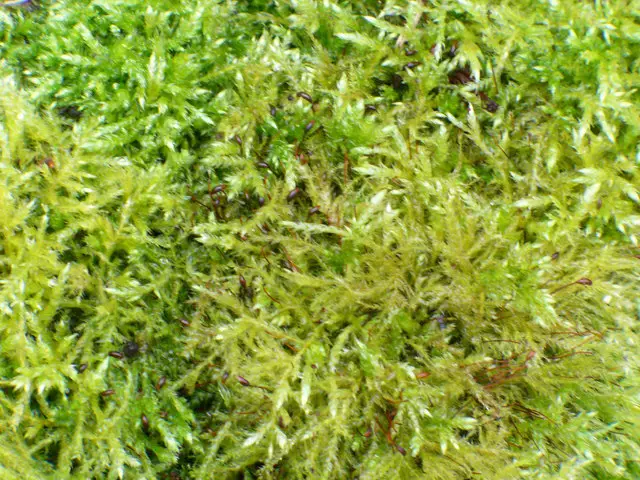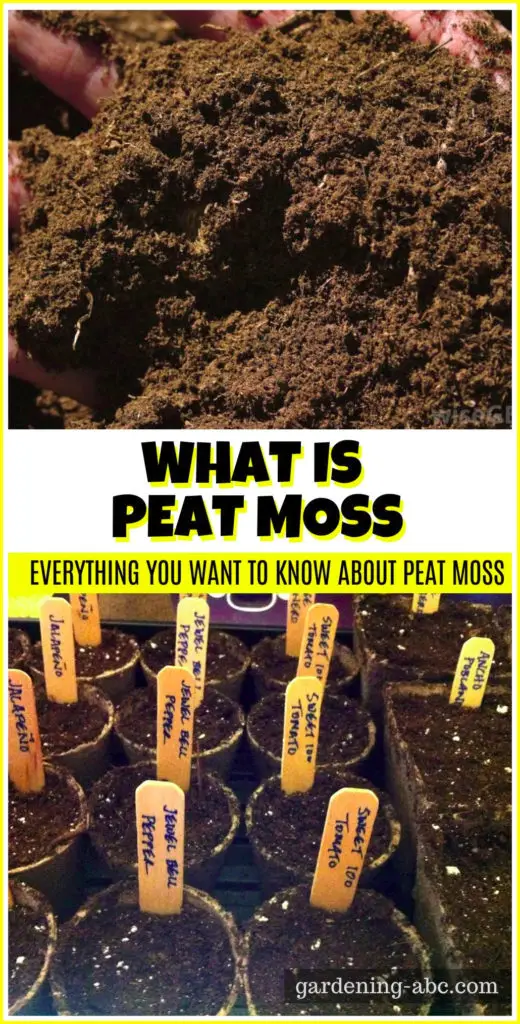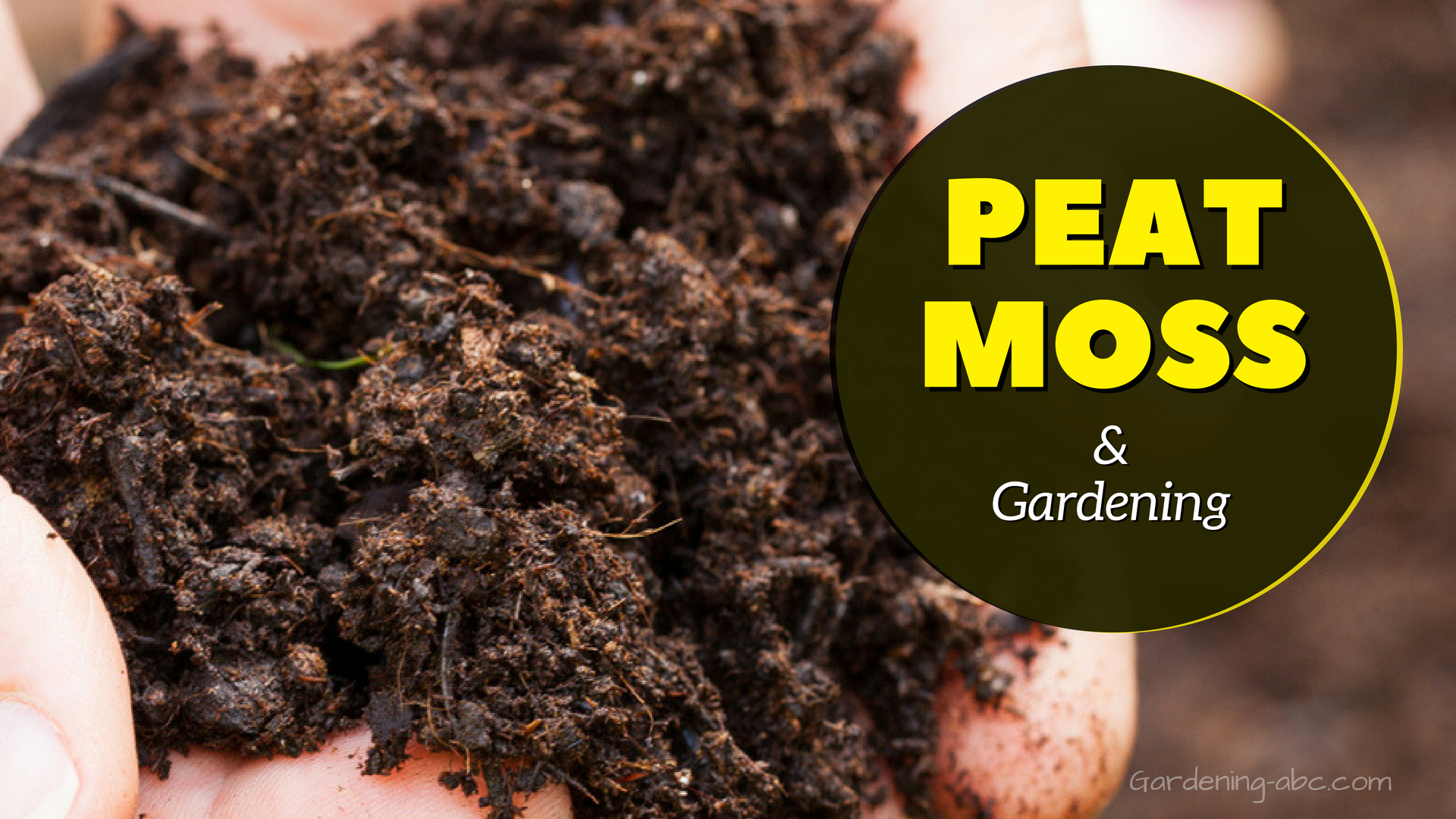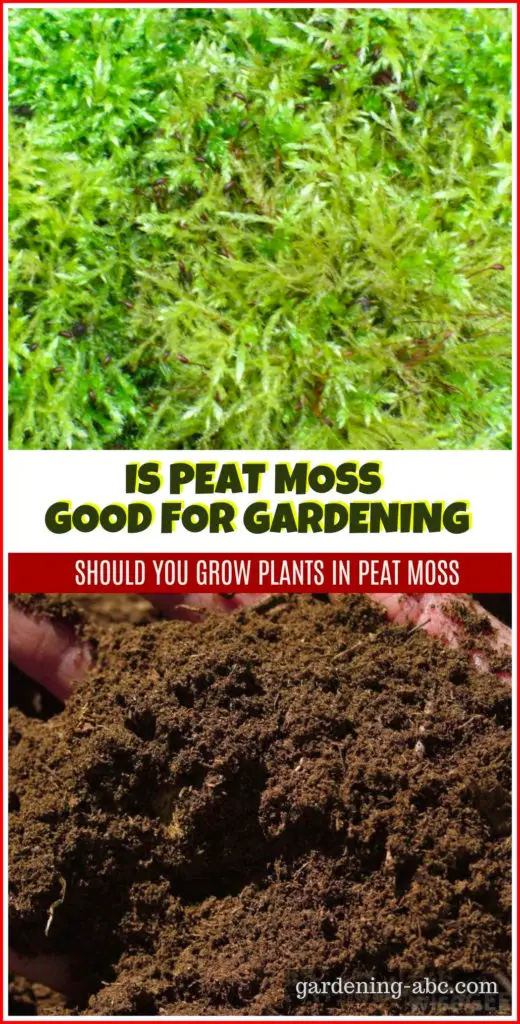We use affiliate links to run our site. When you buy through links on our site, we may earn an affiliate commission, without any added cost to you. Learn more
In our earlier article, we discussed different soilless growing mediums. One such medium is peat moss.
Though peat moss is one of the most controversial and popular soil-less growing mediums, many people don’t have a clear knowledge of what is peat moss and what peat moss is used for.
Some confuse it with compost while others think it is close to a mulch. So in this post, we will dig into what is peat moss and its uses.
What is Peat Moss:
Peat Moss is a decomposed and dead remain of many components like mosses, sedges, shrubs, etc. They form a dead, fibrous material over the course of millennia. This decomposition occurs in peat bogs in many parts of the world.
What Peat Moss is Made Of:
Peat moss is made up of many layers of partially decomposed plant remains. Things like sedges, reeds, mosses, and grasses are some of the common ingredients of peat moss.
The process of peat formation takes over thousands of years due to the abundance of water and the absence of oxygen affecting the natural decaying processes.
Where Does Peat Moss Grow:
The sphagnum moss typically grows on top of the bog (deep and wet marshes) and the peat is produced underneath.
Peat moss is mostly found in places with cool climates. Countries such as Canada, Northern Europe, Scandinavia, and New Zealand are the biggest source of sphagnum peat moss.
Most of the peat moss that we use in growing plants, is from Canada. Areawise Russia has the largest peatland in the world.
Peat Vs Peat Moss Vs Sphagnum Moss:

Though most of the time people use peat, peat moss, and sphagnum moss to mean the same thing, there is a subtle difference between them.
Peat is created from organic matter that is submerged in the bogs. Peat can be formed from different materials but the most common part of peat is Sphagnum Moss. So it is also called peat moss.
Peat is a very common component in both nursery and greenhouse mixes. Peat is usually included in a mix to increase the water-holding capacity or to decrease the weight.
Sphagnum moss, on the other hand, is a plant that grows on the surface layer above the swamp. It is the young residue or live portion of the plant.
With passing time, the old parts of the plant sink into the lower layer. And starts to decompose. As the decomposition happens in an anaerobic (without oxygen) state, the process takes millennials to form a thick layer of dead homogeneous material or peat moss.
Sphagnum moss is commonly used for plant shipment propagation or to line hanging baskets.
Peat Moss vs Compost:
People often confuse peat moss with compost but those two are not the same thing. Here are some of the differences between peat moss and compost.
- Unlike compost, peat moss forms in the absence of oxygen. For compost to happen oxygen is one of the prime requisites.
- Peat moss is mainly composed of moss whereas composting ingredients can be almost anything, that is biodegradable.
- The rate of decomposition is very slow in peat moss but composting is a pretty quick process when you compare it with peat moss decomposition.
- Compost is full of nutrients and is an organic source for NPK for plants. Peat moss does not have any nutrients as such.
Is Peat Moss Acidic:
Peat moss is acidic. It has a pH of around 4-5.
If you remember, we measure soil pH on a 14-point scale from acid to alkaline, with neutral at 7.0. anything lower than 7 is acidic and anything that is more than 7 is alkaline.
Peat moss is an organic amendment and it can lower the soil pH in your garden.
Most plants thrive between 6.0 and 6.5 because most plant nutrients are available in that range. Depending on your locality, the garden soil commonly ranges from a pH of 4 to 8.5.
So if your soil is too alkaline for your plant, and you want to lower the pH level, you can mix peat moss with the soil and produce a more acidic environment.
Why is Peat Moss Good For Plants:
Peat moss is good for plants because it is virtually weed-free, and also is not infested with insects and pathogens. It is also good for holding water, and air. Peat moss is consistent from year to year, and plants thrive in it.
Peat moss can become a very useful growing medium for containers when you add a drainage material like perlite to it.
We, gardeners, use peat moss either to make growing mediums or to incorporate it into a garden or landscape as a soil conditioner. The most common use for peat moss is to grow plants.
The ideal condition for the formation of peat is a wetland where flows of oxygen are not abundant due to the obstruction caused by floods and thus causing a slow rate of decomposition.
When plant material is inhibited from decaying fully (due to lack of oxygen and presence of acidic medium) then it accumulates as peat.
Which Plants Like Peat Moss
Peat moss is very helpful in growing vegetables and plants that love an acidic environment. Plants such as tomatoes, strawberries, blueberries, and other juicy fruits love peat moss. These plants love the acidic soil environment and peat moss helps in achieving that.
Gardeners have successfully grown tomatoes in bales of peat moss. Simply cut an opening in the middle of the broad side of the bale, and insert a tomato plant seedling.
Since the peat moss is acidic and practically void of nutrients, you’ll need to adjust it by adding a well-balanced fertilizer.
Peat moss can reduce extremes in soil dryness and wetness which is helpful, particularly in growing vegetables.
As peat is also sterile, it won’t carry any weeds, diseases, or pathogens that can ruin a vegetable garden.
Peat Moss and Carnivorous Plants:
Peat moss is a very good growing medium for carnivorous plants like Venus flytrap. Normal garden soil is not very suitable for growing carnivorous plants because most of them need moist to wet soil in the warmer months and less moisture in winter. They thrive in slightly acidic soil with good drainage.
The ideal choice for growing carnivorous plants would be a mix of about three parts peat moss to one part sand. It will give them the best drainage and moisture retention.
There are also ready-to-use potting mixes for carnivorous plants available online. You can try them as well.
Different types of Peat Moss:
Based on the decomposition state Peat moss can be of three types:
Fibric peat moss: It is the least decomposed one among the three types and contains fibers in intact condition.
Hemic peat moss: It is much more decomposed than the Fibric one but not as much as the Sapric type.
Sapric peat moss: This is the most decomposed form.
The Uses of Peat Moss:

The usage of Peat moss can be plenty, but here I will only focus on its use in agriculture and gardening.
The use of peat moss in gardening and agriculture has become very popular due to its water-retaining ability (can hold up to 20 times its weight) and rich nutrient content.
You can mix peat moss with soil. sphagnum peat moss holds moisture in dry conditions. It has a proper drainage capacity that prevents the excess water from killing the roots.
How To Use Peat Moss:
Before adding any amount of peat moss to the soil, you first need to test the soil. Take a sample of the soil from your garden.
Rather than collecting the soil from a particular place, use a bucket and put an equal amount of soil from different parts of your garden and mix it. Use this soil mix as a sample for your garden soil.
Test this soil using a pH testing kit. Alternatively, you can contact your local garden centers and get the soil tested.
How Much Peat Moss to Add to Soil:
Once you have the test results in your hand you can plan accordingly. Generally, for 1 full point pH reduction, you need to add 1-2 cubic feet of peat moss.
Keep testing soil periodically with a simple soil tester like this. Generally, the acidifying effect will last up to 2 years. Once you find the pH is raising, add some peat again to lower the pH.
Peat Moss Expansion:
Peat moss comes in compressed-volume bags. So it can expand when you open the pack. Before applying peat moss you have to wet it thoroughly. take out the required amount into a large bucket or wheelbarrow. Then add water until the water is absorbed.
Remember, dry peat repels water. So make sure the moss is wet properly. It should be wet enough that when you squeeze a handful, a drop or two of water comes out. Don’t overdo it though.
Can Peat Moss Be Used As Mulch, Will It Kill Weeds?
Many people think of using peat moss as a mulch for suppressing weeds. But we don’t recommend that. You might kill the weed like any other mulch but you will have to face other problems.
Here are 3 main reasons why you should not use peat moss as mulch:
1. Peat moss can be expensive to use as a mulch. If you mix peat moss with the soil it keeps the soil moist for a long but laying that on top of the soil is not advisable. There are many cheaper options available for a gardener.
2. If peat moss is used as a mulch, it can dry out soils by absorbing water from them.
3. Peat moss repels water when it’s dry. If you use it on top of the soil where it can dry out, you may have a real problem getting it wet again. so using peat moss as mulch is not a good idea.
Does Peat Moss Go Bad / Can You Reuse Peat Moss:
Packed peat moss generally has an expiry date of one year. Once the bales get older they lose their drainage capacity.
Now, that does not mean peat moss will go bad after some time and it will be harmful to use to plants and gardens. You can reuse an old peat bale.
Soil amendment products like peat moss do not really have any shelf life. It might lose its ability to absorb water and its acidity but you can recharge those features.
Peat Moss Nutrients:
Peat moss does not have any plant nutrients that help a garden flourish. So if you are planning to grow crops in peat moss you have to add nutrients from outside.
Adding a good quality garden compost or well-rotted manure into the soil alongside the peat moss. It is a good way of getting nutrients organically.
Maintain the ratio of 2 parts of existing soil to 1 part of new amendments.
Peat Moss-Based Potting Mix
Peat moss is the primary ingredient for most soilless potting mixes. They are primarily used for seed starting and potting houseplants.
These peat moss-based potting mixes also have perlite, vermiculite, and other added nutrients. Sometimes a wetting agent is added to those mixes, as dry peat moss will initially repel water.
Peat Moss and Hydroponics:
Because of its ability to hold water and nutrients well, peat moss is a good choice for hydroponic gardens.
Benefits of using peat moss in hydroponics:
1. Peat moss can get wet then rehydrate quickly and doesn’t compact or break down easily. So it can be used for several years.
2. Unlike other organic compost, peat doesn’t have any adverse weed seeds or microorganisms.
3. You can mix other growing mediums like perlite, vermiculite, etc, to add aeration and adjust the PH of this medium.
Other Peat Moss Uses :
Apart from Agricultural and Gardening purposes peat is also used for different purposes such as a source of fuel (in some countries), water filtration, preservation, balneotherapy, etc.
Peat Moss As Packing Material:
Dried peat moss is hygroscopic, which means peat moss can hold water either by absorption or adsorption.
This quality makes them ideal for use as packing material for sending flowers and live plants. It helps to keep flowers and plants fresh when sent to distant places.
Controversies Surrounding Peat Moss:
The popularity of peat has also caused some controversy when it comes to resourcing. Though sphagnum grows in many places, it usually accumulates very slowly, at the rate of about a millimeter per year. But its extraction rate far exceeded its re-growth rate.
There is some ongoing debate about whether it should be considered a “fossil fuel” or “renewable fuel”. Though some agencies are considering it as a “Slow-renewable fuel”.
When the demand outpaces natural production, there is a danger of over-farming. It also leads to the ultimate destruction of bog habitat that supports many birds, small mammals, insects, and microbial habitats.
Why Peat Moss is Bad For Your Health:
Peat moss is quite dusty, and it can easily get messy. So it can irritate your lungs if ingested. The particles can get stuck to the insides of your lungs for some time.
If you want to work with peat moss in your garden, always wear a respirator like this to protect your lungs.
Why is Peat Moss Bad For The Environment:
The biggest problem with peat moss is that it’s not environmentally friendly.
To mine peat moss, you have to scrape off the top layer of living sphagnum moss. By doing so you are not only damaging the moss but are also destroying the natural habitat of plants like sundews, butterwort, and bog rosemary. The bog also gives support to rare and endangered animals like dragonflies, frogs, and birds.
Though peat moss is a renewable resource, it can take hundreds to thousands of years to form the peat.
You are also releasing CO2 into the air when you mine peat moss that was trapped inside the peat. In fact, according to some scientists, peat bogs store about 10% of all fixed carbon in this world.
Peat Moss Alternative:
Due to these above-mentioned reasons, peat people are looking for an alternative to peat moss for growing plants. One such alternative that has become very popular nowadays is Coconut coir or coco coir.
Coco coir is an organic peat moss alternative that is renewable. Learn more about why coir is the best peat moss alternative in this article.
Some Key Points To Remember When You Use Peat Moss As a Growing Medium:
A last word of caution if you want to use sphagnum peat, or use it regularly,
- Take protective measures such as wearing face masks and gloves.
- Like every other plant in the moss family, Sphagnum also contains spores, inhaling which can be dangerous.
- In some cases, peat moss contains some harmful bacteria which can cause skin irritation and can cause diseases in case it enters the bloodstream.
- Peat can also store nutrients although peat by itself is not fertile. Due to this reason, it can also be used as a fertilizer add-on to the soil.
- Peat is typically very acidic and can be toxic to plant roots. Always mix it with different other mediums before use.
- Before adding it to the soil make sure you do the soil pH testing. If the surrounding soil is already high in acid content you should not add peat moss, or it will hurt the plant very badly.
Conclusion:
Peat moss is a type of sphagnum moss that is commonly used as a garden soil amendment or potting material. It has a high water-holding capacity and can improve drainage in sandy soils.
It can also help to increase the organic matter content of your soil. Peat moss is an excellent choice for mulching gardens and covering bare spots on your lawn.
I hope this post was helpful to you. You can read about other growing mediums here in this post.
Please feel free to share this post with others also.
Like the article? Don’t Forget To PIN IT

Amazon and the Amazon logo are trademarks of Amazon.com, Inc, or its affiliates.




This is excellent informational content. Thank you for sharing.
Thank you for your appreciation.
Really fine post, I surely adore this website, keep on it.
Quite! This was a truly amazing post. Thank you for your supplied information
I adore it when folks come together and share views, great blog,
keep it up.
Great post. I am facing a couple of these difficulties.
Thanks for the outstanding information, it really is useful.
Hello! Ι could have sworn I’ve visited this ѕite bеfore but after going through many
of the articles I realized it’s new to me. Anyways, I’m definitely pleased I found
it and I’ll be book-marking it and checking back regularlу!
Yoսr style is sⲟ unique compared to otһer ρeople I have read stuff from.
Thanks for posting wһen you have the opportunity, Guess I’ll
just bookmark this blog.